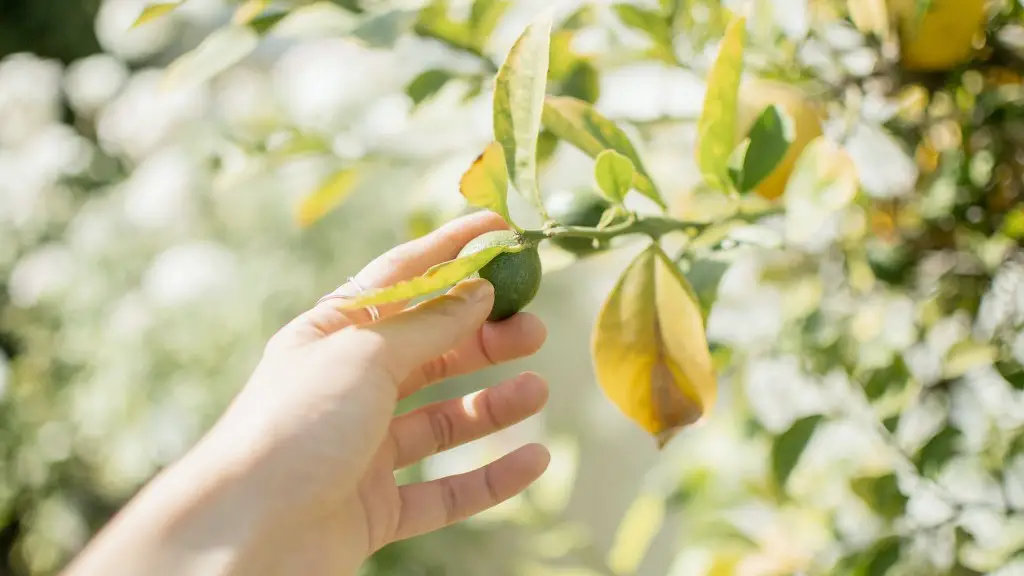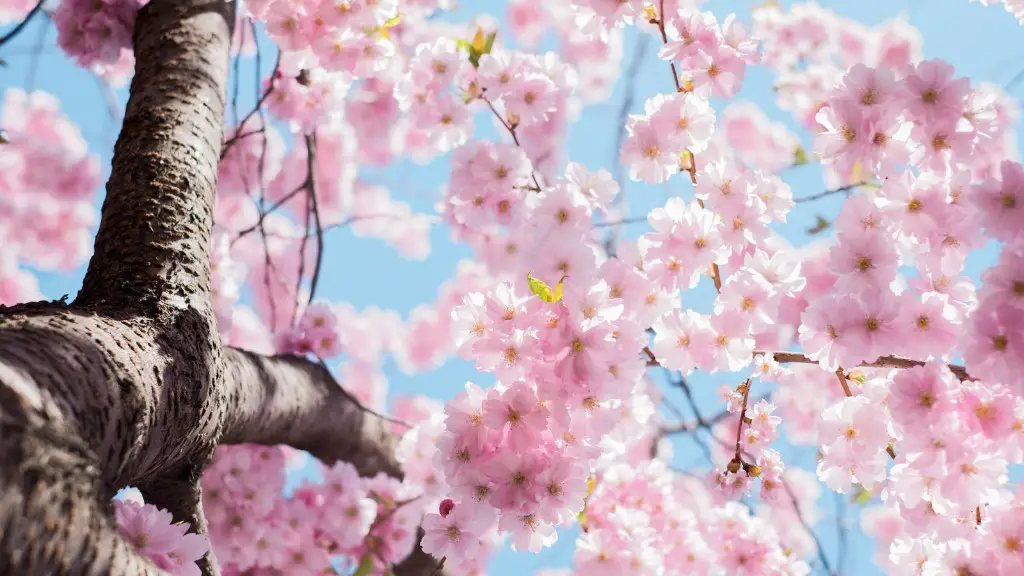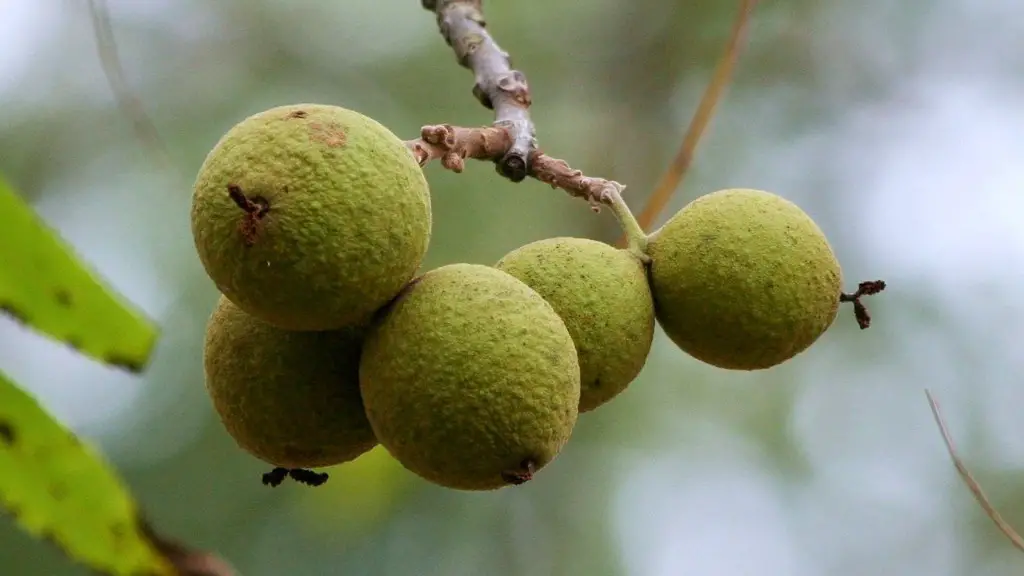Meyer lemons are a sweet, juicy, low-seed variety of citrus that lends a taste of sunshine to your kitchen garden. With proper care, a Meyer lemon tree can bear juicy fruit year-round. Here are some tips on how to cultivate a healthy Meyer lemon tree and enjoy its bounty.
Choose a planting location with full sun and well-draining soil. Meyer lemon trees should be planted in the spring, when soil temperatures and the climate are milder. Dig a hole twice as wide and the same depth as the container the Meyer lemon tree came in. Fill the hole with soil.
Water your tree deeply and regularly. As a general guide, young trees should be watered every 10-14 days, while mature trees need watering every 7-10 days. Feel the top few inches of soil; if it is dry, it’s time to water.
Fertilize your Meyer lemon tree. A fertilizer with a 8-8-8 NPK (nitrogen, phosphorus, potassium) ratio should do the trick. Feed in spring, before it flowers, and again in summer.
Prune the tree lightly. Meyer lemon trees are self-fruiting, so don’t worry about taking too much off. In late winter and early spring, remove dead and dying twigs and branches.
Protect against pests and disease. Signs of trouble include leaf yellowing and falling or premature fruit drop. Prune away affected leaves and twigs, and try spraying a mixture of insecticidal soap and water on leaves.
Know when to expect a harvest. Meyer lemons will be ripe in the late fall through early spring. Lemons will have a bright yellow peel when they’re ready to pick.
Planting the Tree
When planting a Meyer lemon tree, it is important to choose a location that has full sun exposure. Additionally, the soil should be well-draining and the climate mild. When digging a planting hole for the tree, it should be twice as wide as the container and the same depth as the container. After filling the hole with soil, the tree is ready to be planted.
When choosing a spot to plant the Meyer tree, the location should receive at least 8 hours of direct sunlight a day. Shady areas should be avoided. Clay-like soils can be amended with sand to improve drainage. It is best to avoid windy sites, as they can make the tree susceptible to disease and insect damage. In regions with mild winters and hot summers, Meyer lemon trees should be planted in the spring, while in areas with cold winters and hot summers, they should be planted in the fall.
Meyer lemons thrive in acidic soil. To add acidity to the soil, mix in a handful of coffee grounds and several teaspoons of baking soda when planting. This will help create the ideal environment for the tree to grow and produce lots of fruit. It is also important to work large amounts of organic matter into the soil when planting, as this will improve the texture of the soil.
When the Meyer lemon tree is planted, it should be watered deeply to ensure that the roots are thoroughly saturated. For young trees, it is best to water them every 10-14 days, while mature trees need to be watered every 7-10 days. Additionally, it is important to keep an eye on the soil’s moisture content; if the top few inches of soil are dry, it is time to water the tree.
An important factor to consider when planting a Meyer lemon tree is wind protection. If the tree is planted in a windy area, it should be staked to stabilize it and help protect it from wind damage. This can be done by tying the tree to a sturdy stake with nylon twine. Lastly, it is a good idea to apply a layer of organic mulch around the base of the tree after planting. This will help to retain moisture and protect the roots from extreme temperatures.
Fertilizing the Tree
In order to properly care for a Meyer lemon tree, it is important to fertilize it regularly. The best fertilizer to use is one with a 8-8-8 NPK (nitrogen, phosphorus, potassium) ratio. It should be applied twice a year, in spring before it flowers and again in summer.
It is important to use a fertilizer that is specifically formulated for fruit-bearing trees, as this will ensure the tree gets the nutrients it needs. When fertilizing the tree, it should be done during the growing season when the soil is warm. Additionally, it is important not to overdose the tree with fertilizer, as too much can damage the roots and leaves.
The amount of fertilizer that is applied should be determined by the size of the tree. A general rule is to use ¼ to ½ pounds of fertilizer for every foot of tree height. For example, a 5-foot tree should be fertilized with 2-4 pounds of fertilizer. Additionally, the fertilizer should be applied in a circle around the drip line (the area where the branches and leaves reach).
When applying fertilizer, it is important to make sure it doesn’t come into contact with the trunk or roots of the tree. Additionally, the fertilizer should be watered in after application. This will ensure the nutrients are absorbed by the roots. Finally, it is important to avoid fertilizing during periods of drought, as this can damage the tree.
Pruning the Tree
Another important aspect of caring for a Meyer lemon tree is pruning. Pruning the tree will help to keep it healthy and promote fruit production. When pruning the tree, it should be done lightly, as Meyer lemons are self-fruiting and don’t need much pruning in order to produce fruit.
When pruning, it is important to focus on removing dead and dying twigs and branches. This will help to keep the tree healthy and prevent the spread of disease. Additionally, it will keep the tree from becoming overgrown. Pruning should be done in late winter or early spring, when the tree is in its dormant stage. This will ensure any fresh growth is not harmed in the process.
When pruning the Meyer lemon tree, it is important to keep the branches and twigs in proportion. This means there should be an even ratio of large, medium and small branches. Additionally, when removing branches or twigs, it is important to make a clean cut. This will allow the tree’s wound to heal quickly and will prevent disease and pest infestations.
When pruning, it is also important to remove any suckers that form near the base of the tree. These are shoots that often arise from the rootstock and do not produce fruit. Additionally, it is important to open up the tree’s canopy to allow for good airflow, which will help prevent disease. Finally, avoid pruning during periods of active growth, as this can stress the tree.
Protection Against Pests and Disease
In order to keep a Meyer lemon tree healthy and thriving, it is important to provide protection against pests and disease. The tree should be checked regularly for signs of trouble. These signs can include yellowing leaves, falling or premature fruit drop, and pest infestations. If any of these signs are seen, it is important to take action right away.
The first step to combating pests and disease is to remove any affected leaves or twigs. This will help to slow the spread of the problem. Additionally, spraying a mixture of insecticidal soap and water on the leaves of the tree can help to prevent pest infestations. This mixture should be sprayed on the leaves every 10-14 days.
Another way to protect the tree from pests and disease is to keep the surrounding area free of debris and weeds. This will help to minimize the risk of infection or infestation. Additionally, it is important to keep the tree watered regularly and maintain proper mulching and fertilizing practices. These practices will help to maintain the tree’s health by providing it with the necessary nutrients.
Finally, if a pest or disease infection is severe, it is important to seek professional help. A trained arborist or tree doctor can provide advice on how to treat the problem. Additionally, they can provide professional treatments or insecticides to help get the problem under control.
Harvesting the Fruits
When it comes to harvesting the fruits of a Meyer lemon tree, it is important to know when the fruits are ripe. Most Meyer lemons will reach maturity from late fall through early spring. When the time comes to pick the fruits, it is important to check for ripeness. The ideal time to harvest is when the fruits have deep yellow peels.
When harvesting the fruits, only ripened lemons should be picked. Unripe lemons should be left on the tree, as they will ripen with time. Additionally, when picking the fruits, it is important to be gentle. This will help ensure that the fruits stay intact and are not damaged.
Once the Meyer lemons are picked, they should be stored in sealed bags in the refrigerator. Ideally, the fruits should be consumed within two weeks. Additionally, caution should be taken when handling the fruit, as Meyer lemons can stain skin, clothes and surfaces.
By following the above tips, caring for a Meyer lemon tree can be a fun and rewarding experience. With proper care and maintenance, a Meyer lemon tree will yield delicious, juicy fruits all year round.




